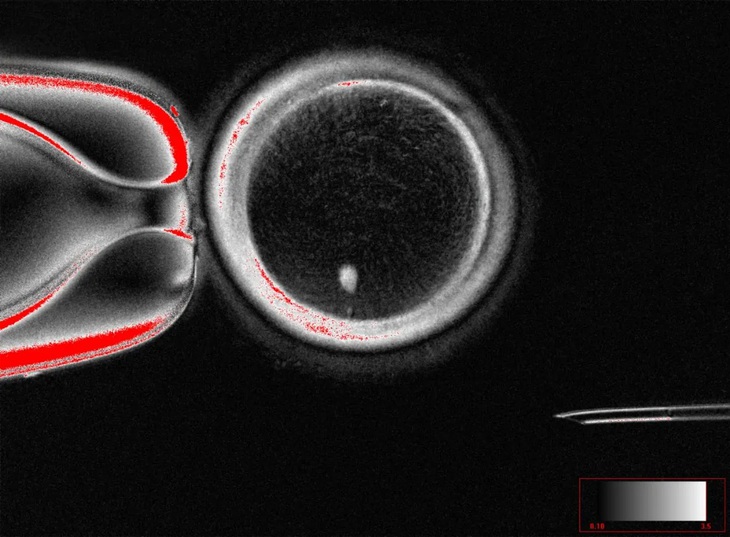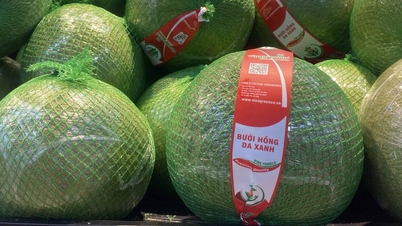
Egg cells are created by implanting the nucleus of skin cells into donated eggs - Photo: MITALIPOV LABORATORY
Infertility affects one in six adults worldwide, and science is working to understand the causes and develop new treatments.
The most common cause of infertility is insufficient or degenerated egg cells. In such cases, conventional IVF may not be a viable option.
However, science has recently discovered a new method called somatic cell nuclear transfer: swapping the nucleus of a donated egg cell with the nucleus of another cell.
In the new study, led by researchers at Oregon Health and Science University (USA), the nuclei of skin cells were implanted into donated eggs that had their original nuclei removed.
The team then stimulated the egg cells to undergo a process called "mitomeiosis."
Although similar to mitosis - the natural process of cell division to produce two identical copies of the parent cell (46 chromosomes), "mitomeiosis" has important differences, resulting in the elimination of one set of chromosomes, so that the resulting daughter cell contains only 23 chromosomes.
In total, the team created 82 functioning eggs from this process. They then fertilized them with sperm in the lab. Of these, about 9% developed into blastocysts, the early stage of embryonic development, after six days.
Culture is not continued after this point as this is when the blastocyst is transferred into the uterus during conventional IVF.
Professor Roger Sturmey, who works at the University of Hull (UK) and was not involved in the research, said the research was important because it opened up the possibility of creating new, functional egg cells containing genetic material that could, in principle, be taken from cells anywhere in the body.
However, Professor Sturmey and the authors themselves point out that the success rate of this method is quite low. Nevertheless, this study proves that somatic cell nuclear transfer is not just a theoretical possibility.
The team said further research is needed to optimize the method if it is to be used clinically. It would also be a step forward in allowing more women to have children with their own genes.
The study was published in the journal Nature Communications on September 30.
Source: https://tuoitre.vn/tu-te-bao-da-cac-nha-khoa-hoc-tao-ra-trung-nguoi-co-the-thu-tinh-20251001105944531.htm







![[Photo] Hanoi morning of October 1: Prolonged flooding, people wade to work](https://vphoto.vietnam.vn/thumb/1200x675/vietnam/resource/IMAGE/2025/10/1/189be28938e3493fa26b2938efa2059e)




























![[Photo] Panorama of the cable-stayed bridge, the final bottleneck of the Ben Luc-Long Thanh expressway](https://vphoto.vietnam.vn/thumb/1200x675/vietnam/resource/IMAGE/2025/9/30/391fdf21025541d6b2f092e49a17243f)

























































Comment (0)